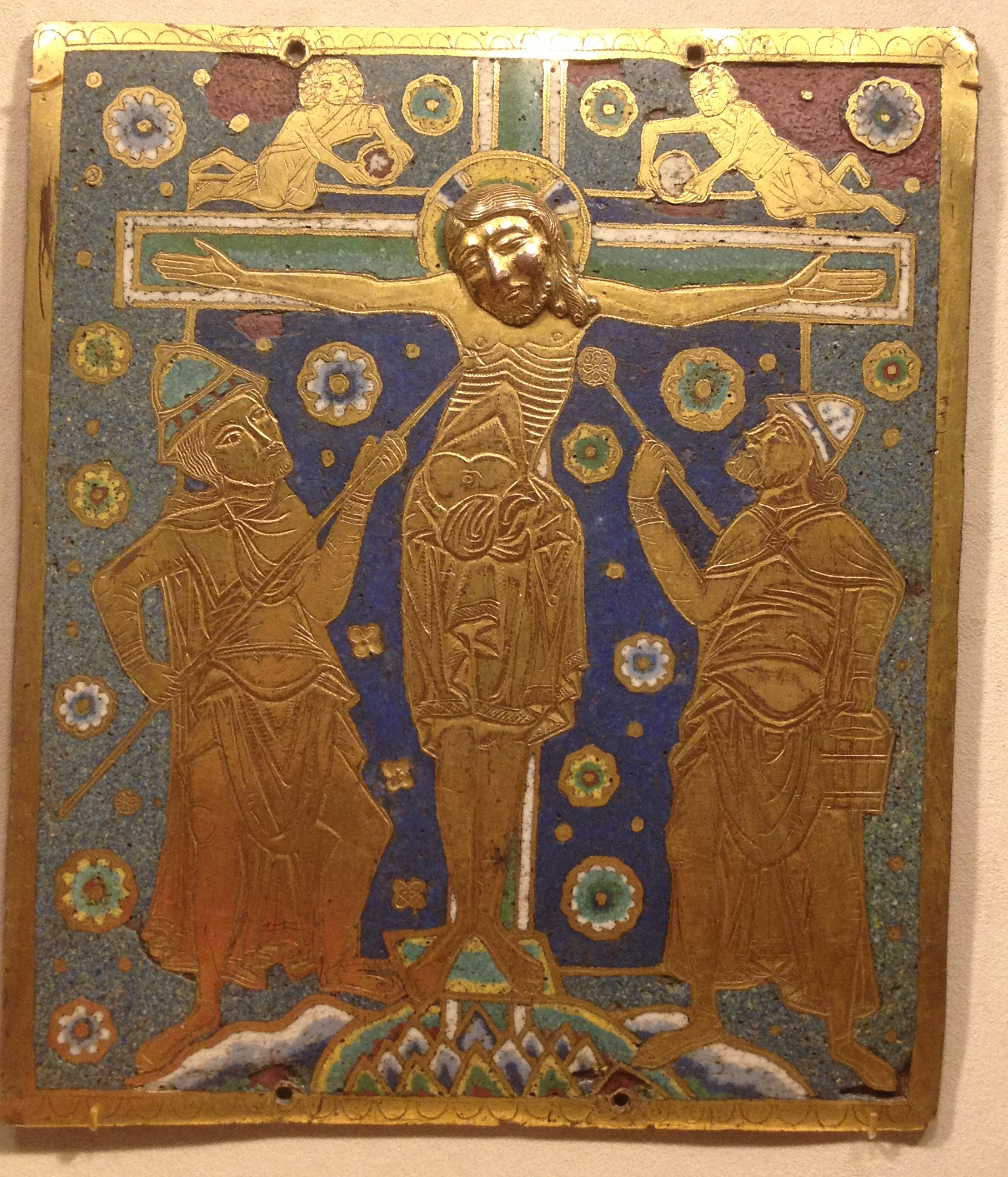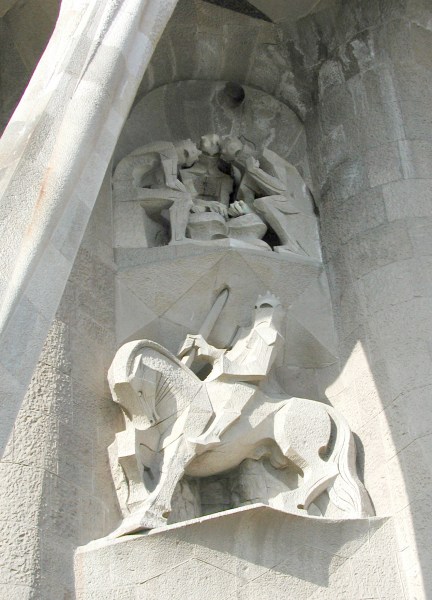In the Golden Legend some of the blood that spilled from Christ's side is said to have gotten into Longinus's eyes and cured his blindness. He then became a Christian and was eventually martyred in Cappadocia. Some artists have managed to picture the restoration of his eyesight. In Salimbeni's Crucifixion, for example, the blood has run down the lance into his eye, and an associate is trying to rub it out. In the Crucifixion image at Aquileia's cathedral his blindness is signified by whiteness where the eyes should be, yet he casts his gaze toward Jesus.
Traditionally Longinus was taken to be the same person as the centurion who exclaimed "Indeed this was the son of God" in Matthew 27:54. A number of Catholic and Orthodox sites on the internet make this claim, and it is well represented in medieval literature.1 The Aquileia Crucifixion fresco conflates the two in a single soldier who is blind, has a halo, and raises his hand in acclamation. In the Scrovegni Chapel's Crucifixion panel a man on the right points to Christ like the centurion and has a halo like St. Longinus.
St. Longinus is only rarely seen in separate portraits. The most famous of these would be the Bernini statue at right. Naturally, the attribute that Bernini provided to St. Longinus was his lance. Narrative images mostly involve his presence at the Cross, but in the 15th century Weingarten Abbey commissioned a large triptych illustrating the legend that he collected some of Christ's blood in a flask that eventually landed up at the abbey.
Longinus also figures in secular literature. His spear is an important plot point in Malory's Morte d'Arthur (II, 15-16): Joseph of Arimathea takes it to a castle in Britain, where it gives King Pellam the chronic wound that only Sir Galahad can heal. In modern times Longinus passes the centuries as an "eternal mercenary" in a series of pulp novels by a retired sergeant in the U.S. Army. For a complete study of the subject, see Peebles, The Legend of Longinus in Ecclesiastical Tradition and in English Literature.
Prepared in 2014 by Richard Stracke, Emeritus Professor of English, Augusta University. Revised 2016-06-26, 2018-12-15.
HOME PAGE

Longinus and Stephaton in a German enamel, ca. 1200 (See description page)

St. Longinus in St. Peter's, Rome (See description page)

Longinus' spear pierces the stone of the church (See description page)
ATTRIBUTE
- A long spear
MORE IMAGES
- 14th century: A rare illustration of The Martyrdom of St. Longinus (French manuscript illumination).
DATES
- Feast day: March 15
BIOGRAPHY
- Caxton's translation of a Life of Longinus: html or pdf
- ActaSanctorum, March vol. 2, 370-88
- Martyrium Sancti Longini Centurionis, in Migne, Patrololgiae Graecae, vol. 93, 1545-60
ALSO SEE
NOTES
1 See, for example, the Chester Passion, 775-804, and the Ludus de Passione in Dronke, 296-303. But the York Mortificatio Cristi treats Longinus and the Centurion as separate characters (Bevington, 589-90).